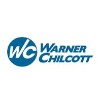
Dalacin-T Gel Post Approval Study
Acne VulgarisTo investigate, in a comparison vs. Acuatim cream (nadifloxacin cream), the efficacy and safety of Dalacin T Gel (clindamycin phosphate gel) as a therapeutic medication for acne vulgaris in acne vulgaris patients, including children ages 13 and up, in order to clarify the clinical positioning of Dalacin T Gel.

A Comparative Study of the Tolerability of Two Combination Therapies for the Treatment of Acne
Acne VulgarisThe purpose of this study is to compare the tolerability of topical combination therapies in the treatment of facial acne.

Compare the Tolerance of Clindamycin 1% /Benzoyl Peroxide (BPO) 5% Gel to Clindamycin 1.2%/ BPO...
Acne VulgarisThis is a single-blind (blinded expert grader) study that will enroll 25-30 healthy volunteers without facial acne. On 1 side of the face, the subject will apply 1 of the 2 test products, clindamycin and benzoyl peroxide 5% or clindamycin phosphate and benzoyl peroxide 2.5% and the other side of the face will remain non-treated to serve as a control.

Combination Therapy With Differin® Gel 0.3% and Duac® (Clindamycin/Benzoyl Peroxide Gel) in Subjects...
Acne VulgarisThis study is to determine the efficacy and safety of 12 week treatment with Differin® Gel 0.3% applied in the evening, in combination with Duac® (Clindamycin/Benzoyl Peroxide Gel) applied in the morning, in Subjects with Acne vulgaris.

Treatment of Moderate to Severe Facial Acne Vulgaris
Acne VulgarisRandomized, multi-center, double-blind, placebo-controlled 12-week study to assess the safety and efficacy of 3 doses of an oral formulation of Doxycycline oral tablets using the Investigator's Global Assessment (IGA) score and the absolute change from baseline in inflammatory lesion count in patients with moderate to severe facial acne vulgaris. Additionally, the absolute change from baseline in non-inflammatory and total lesions of the active study medication to placebo will be evaluated.

Adapalene-BPO Gel Associated With Doxycycline Hyclate 100 mg in the Treatment of Severe Acne Vulgaris...
Severe Acne VulgarisThe purpose of this study is to demonstrate the efficacy of Adapalene 0.1% / Benzoyl Peroxide (quoted as BPO) 2.5% Gel associated with Doxycycline Hyclate 100 mg Tablets compared to Adapalene 0.1% /Benzoyl Peroxide 2.5% Vehicle Gel associated with Doxycycline Hyclate 100 mg Tablets, in the treatment of severe acne vulgaris. The safety of the two treatment regimens will also be evaluated.

A Clinical Study to Evaluate the Safety and Effectiveness of an Investigational Product Called CT...
Acne VulgarisAcneThe purpose of this study is to demonstrate the safety and effectiveness of CT Gel in subjects with acne vulgaris. The hypothesis is that CT Gel is superior to Clindamycin Gel, Tretinoin Gel and Vehicle Gel for the treatment of acne vulgaris.

Efficacy and Tolerance of a Derivative of Salicylic Acid and 5% Benzoyl Peroxide in Facial Acne...
Acne VulgarisAcne vulgaris is a frequent inflammatory skin condition involving the pilosebaceous unit and affecting more than 80% of teenagers. Mild to moderate acne vulgaris is usually treated with topical agents such as benzoyl peroxide, retinoids and antibiotics. These treatments can be associated with local tolerance problems and/or antibiotic resistance. Salicylic acid has been shown to be an effective treatment for acne. LHA is a lipophilic hydroxy acid derivative of salicylic acid that has comedolytic and antibacterial properties. The objective of this trial was to compare the efficacy and tolerance of a cream formulation containing 0.3% LHA (LHA formulation) to a 5% benzoyl peroxide gel.

Trial of Clindamycin / Benzoyl Peroxide Gel in Subjects With Acne
Acne VulgarisThis is a Randomized, Double-Blind, Controlled Study to evaluate the Safety and Efficacy of a clindamycin / benzoyl peroxide gel in Subjects with Acne Vulgaris

Evaluation of the Effectiveness, Safety, and Tolerability of Duac Akne Gel and Epiduo Gel in the...
Acne VulgarisThe purpose of this study is to compare the effectiveness of two marketed products in subjects with facial acne vulgaris
